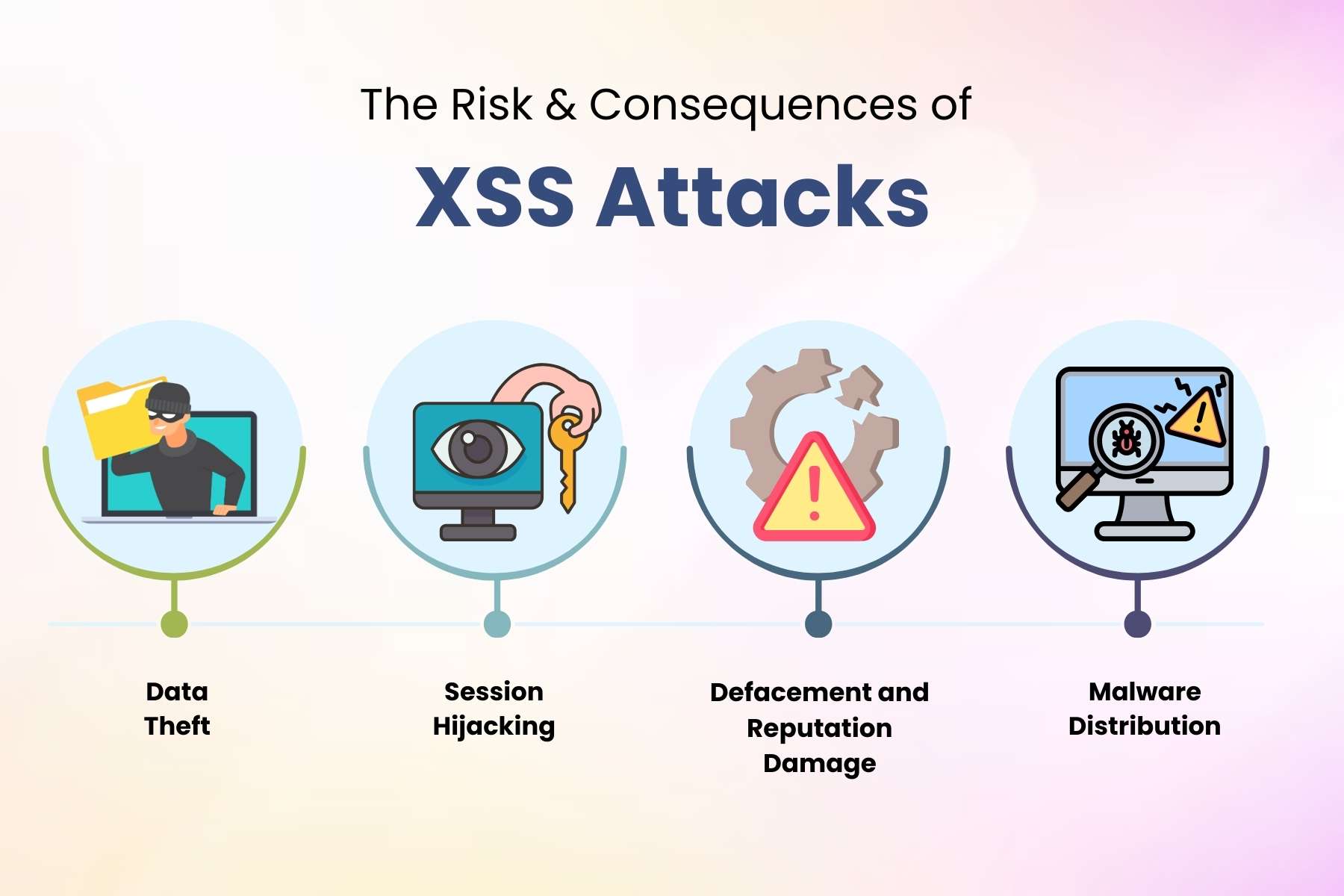Imagine you are visiting a website and clicking on any link, and suddenly, your personal information is at risk without you realizing anything. This type ofCross-site Scripting XSS attack is more common than most people think. Hackers exploit vulnerabilities in websites and web applications to insert malicious code or viruses, steal your important information and data, or even deface websites. Many companies have faced this type of attack. Even major social media platforms and online banking services have suffered from XSS attacks. Understanding how these attacks work is the first and main step toward protecting websites and ensuring a safe online experience for everyone.
What is the meaning of Cross-Site Scripting?
Cross-site scripting (XSS) is a cyber-attack technique where hackers inject malicious scripts into vulnerable web applications. These codes are usually written in JavaScript and other languages like HTML. The primary goal of XSS is to execute unwanted actions that are delivered to a victim’s browser. And stealing data, redirecting the user to unwanted malicious websites, or manipulating the content on a page. XSS does not attack applications directly. They first target the user. Websites that don’t sanitize user inputs properly are particularly vulnerable to Cross-Site Scripting XSS attacks.
How does Cross-Site Scripting Work?
Cross-site scripting is a Cyber Attack that exploits the fact that browsers cannot understand and find the difference between legitimate codes and Attacker-controlled code. When the same-origin policy is not proper, then attackers attack and modify all web pages. It also allows attackers to inject malicious code, which is then executed by the browser or JavaScript that modifies content on the page. Cross-site scripting can cause serious issues. Attackers use XSS to decode websites, spread malware, phis for user credentials, and many more.
Types of XSS Attacks:

1. Stored XSS
Stored XSS happens when malicious code is permanently saved on a website and runs whenever someone visits the page.
2. Reflected XSS
Reflected XSS occurs when malicious code is included in a URL or form input, and it is immediately sent back to the response, it affects users who click the link.
3. DOM-based XSS
DOM-based XSS is the type that manipulates the web page structure through JavaScript, changing the site behavior for users without modifying the server’s response.
The Risk & Consequences of XSS Attacks:

1. Data Theft
Hackers can steal sensitive information like login details, personal data, or payment information from users.
2. Session Hijacking
Hackers can take over a user’s session, allowing them to access other’s accounts without permission.
3. Defacement and Reputation Damage
Websites can be altered or vandalized, damaging the brand’s trust and credibility.
4. Malware Distribution
Attackers can use XSS to inject malicious scripts that trick users into downloading malware.
How to protect your websites from XSS Attacks?

To protect your websites from XSS Attacks, use security measures like output encoding and input validation and implement a Content Security Policy (CSP) in user inputs. Avoid inserting user-generated content directly into your website without proper filtering. Also, keep your website’s software and framework updated to fix known vulnerabilities. Use secure authentication methods, and enable HTTP-only and secure flags on cookies, to prevent hackers from stealing user data.
What Languages are targets of XSS?
The most common language used in Cross-site scripting is JavaScript, but XSS affects other languages also, like HTML and CSS, as they run in browsers and interact with user input. It can also affect Python, PHP, Node.js, etc. when handling unsafe data. Any other language generating interactive or user-generated web content is vulnerable to XSS attacks.
What is the impact of XSS?
Cross-site scripting attacks can also impact a business’s reputation, including user data, hacking accounts, and spreading malware. A hacker can change the content of a company’s website, damaging its reputation or spreading false information. It can also deface websites, compromise business data, change the instructions given to users who visit the targeted website, and misdirect them. In most cases, XSS can lead to financial losses and damage the company’s image. Proper input validations and security measures can prevent these attacks.
Conclusion:
By understanding how Cross-site scripting works and implementing the right security measures, website owners and developers can protect their sites and users from these attacks. Keep your website secure and your users safe by following best practices for web security. A combination of input validation, output encoding, a robust Content Security Policy (CSP), and regular security audits is essential for protecting your website from XSS attacks.
So, keep your site free and secure against Cross-site scripting (XSS) Attacks.






